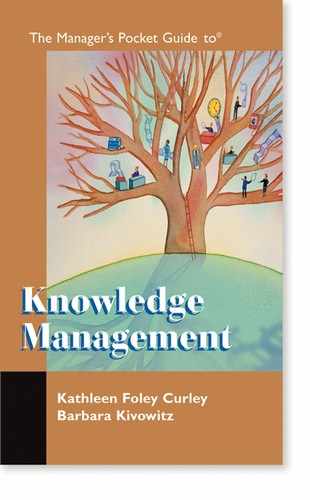Chapter One
Knowledge Management: Why Now?
Knowledge is now a core business asset. What forces and drivers are making knowledge management essential to business strategy?
A business definition of knowledge clarifies the relationship among data, information, and knowledge and provides a foundation for effective knowledge management.
Chapter Three
Managing Knowledge: The Process
To make knowledge usable, and realize its value, businesses develop processes for creating it, distributing it, and applying it.
Chapter Four
Making the Connection: Knowledge Management and Organizational Learning
What is knowledge management? How does it link to organizational learning? Using the RICE model, a framework of Responsiveness, Innovation, Competency, and Efficiency, organizations can link knowledge management and organizational learning and focus their knowledge management strategy on building core competencies.
Chapter Five
Getting Started and Going Forward
Nine specific action areas rooted in the RICE model provide targeted ways to assess and build competency, use knowledge to make processes more efficient, increase responsiveness, and nurture innovation.
Chapter Six
Implementing Knowledge Management
A practical plan and roadmap lay out the steps for knowledge management implementation. A scenario describes how one (fictitious) company puts it all together to develop a knowledge management strategy for managing their knowledge assets to expand their core competency and win significant competitive advantage.
